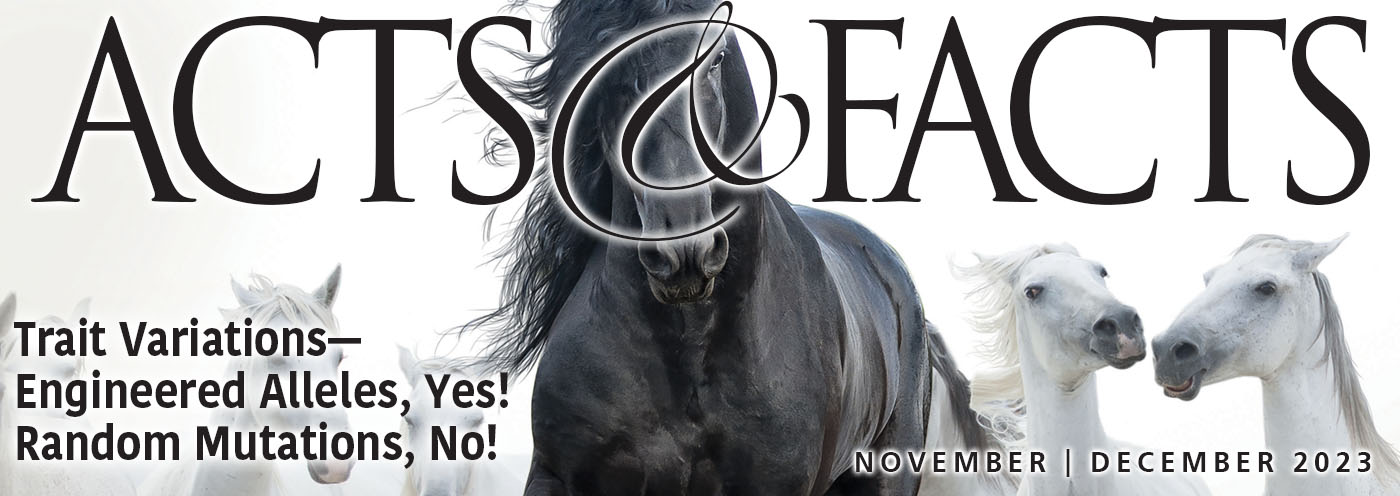DNA is a biochemical that contains genetic information. And like all other cellular ingredients, it decays if cellular systems don't maintain it. Now, scientists are more confident about how fast it falls apart after a cell dies.
A team of researchers recently completed a thorough investigation of 158 ancient leg bones that belonged to giant extinct birds called moa, which once lived on New Zealand's South Island. Using radiocarbon ages and measures of DNA integrity, the researchers generated a DNA decay rate with unprecedented rigor. But their results do not fit with claims from secular scientists who have found plenty of examples of intact DNA from supposedly million-year-old samples.
The moa bone researchers, publishing in the Proceedings of the Royal Society B, discovered that after only 10,000 years, DNA strands in bone would be so far dilapidated that DNA sequencers could no longer process it.1 They found that their DNA decay data best fit a logarithmic decay model, which follows the molecule's initial disintegration into large fragments as happening faster than its later disintegration into smaller fragments. At room temperature, they measured the half-life of DNA to 521 years.2 After this time, only half of the amount of DNA present when the animal cells died should remain. And after another 521 years, only half of what remained after the first half-millennium would remain, and so on until none remains.
Inconsistent results have frustrated prior attempts to measure DNA's decay rate, probably caused by differences in setting, nearby chemistry, amounts of water, and other factors that accelerate the inevitable chemical DNA decay. This project minimized variables by focusing on the moa bones, which experienced consistent temperature and burial conditions, and by analyzing so many of them.
So, one set of secular scientists presented a DNA decay rate that precludes millions of years, and another set of secular scientists presented DNA from fossils deemed to be millions of years old. Both cannot be right.
One commenter on the Nature News report of this new DNA half-life posted, "This is nonsense. There's been dozens and dozens of reports of DNA isolated from sources orders of magnitude older than 521 years," along with cited reports of ancient DNA.3
Should the supposedly million-year-old DNA from fossils justify calling this study's analysis of 158 bones "nonsense," or should the analysis of 158 bones call into question the age labels of reportedly ancient DNA samples? Secular scientists have been processing the same vexing questions for decades regarding protein decay rates and proteins found in fossils, including dinosaur bones.
But abandoning the millions-of-years dogma in favor of a young world solves the whole problem. Ancient DNA is in the fossils and DNA half-life is short, which makes perfect sense if the fossils are only thousands, not millions, of years old.
References
- Allentoft, M. E. et al. The half-life of DNA in bone: measuring decay kinetics in 158 dated fossils. Proceedings of the Royal Society B. Published online before print, October 10, 2012.
- Specifically, this is their determined half-life for a 242 base-pair segment of mitochondrial DNA called the control region. The researchers calibrated this result using time in years from carbon dating the fossils bones. Although carbon dating is unreliable in older samples, it often provides reasonable age information for objects within the relatively recent time range of these moa bones. See Aardsma, G. A. 1989. Myths Regarding Radiocarbon Dating. Acts & Facts. 18 (3).
- Kaplan, M. DNA has a 521-year half-life. Nature News. Posted on nature.com October 10, 2012, accessed October 12, 2012.
* Mr. Thomas is Science Writer at the Institute for Creation Research.
Article posted on October 24, 2012.







